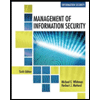Hello, I am researching about the two following topics in reverse engineering and program analysis. Can you please give me some information on these two with subcategories so it can be organized and hit on many different points withing this topic, if you have any sources you may also add them. Please write in text no bullet points. thank you. 1. How do you identify and analyze obfuscated code during reverse engineering?Researching methods to identify and analyze obfuscated code during reverse engineering is a valuable and timely research topic due to the increasing prevalence of code obfuscation techniques in malicious software and cybersecurity challenges. Obfuscated code hinders understanding, making it crucial to explore effective strategies for detection and de-obfuscation. By addressing this topic, researchers contribute to the development of advanced tools and methodologies that enhance the reverse engineering process, strengthen cybersecurity defenses, and provide valuable insights into the evolving landscape of code obfuscation techniques employed by malware authors. This research is instrumental in improving the capabilities of security professionals and contributing to the ongoing efforts to develop resilient countermeasures against sophisticated threats.Research Source: "Practical Malware Analysis: The Hands-On Guide to Dissecting Malicious Software" by Michael Sikorski, Andrew Honig. 2.How do you approach the reverse engineering of file formats and data structures?Examining the approach to reverse engineering file formats and data structures is a valuable research topic due to its fundamental role in various domains, including cybersecurity, forensics, and software interoperability. Understanding how to dissect and reconstruct file formats is crucial for extracting meaningful information from binary data, ensuring data integrity, and developing tools for data manipulation. Investigating effective methodologies and tools for reverse engineering file formats contributes to advancements in data forensics, malware analysis, and the interoperability of software systems. This research is pivotal in enhancing our ability to comprehend complex data structures, facilitating data interchange, and addressing the challenges posed by proprietary or undocumented file formats in diverse applications.Research Source: "File Format Internals: A Developer's Guide" by Paul Hsieh
Hello, I am researching about the two following topics in reverse engineering and program analysis. Can you please give me some information on these two with subcategories so it can be organized and hit on many different points withing this topic, if you have any sources you may also add them. Please write in text no bullet points. thank you.
1. How do you identify and analyze obfuscated code during reverse engineering?
Researching methods to identify and analyze obfuscated code during reverse engineering is a valuable
and timely research topic due to the increasing prevalence of code obfuscation techniques in malicious
software and cybersecurity challenges. Obfuscated code hinders understanding, making it crucial to
explore effective strategies for detection and de-obfuscation. By addressing this topic, researchers
contribute to the development of advanced tools and methodologies that enhance the reverse
engineering process, strengthen cybersecurity defenses, and provide valuable insights into the evolving
landscape of code obfuscation techniques employed by malware authors. This research is instrumental
in improving the capabilities of security professionals and contributing to the ongoing efforts to develop
resilient countermeasures against sophisticated threats.
Research Source: "Practical Malware Analysis: The Hands-On Guide to Dissecting Malicious Software" by
Michael Sikorski, Andrew Honig.
2.How do you approach the reverse engineering of file formats and data structures?
Examining the approach to reverse engineering file formats and data structures is a valuable research
topic due to its fundamental role in various domains, including cybersecurity, forensics, and software
interoperability. Understanding how to dissect and reconstruct file formats is crucial for extracting
meaningful information from binary data, ensuring data integrity, and developing tools for data
manipulation. Investigating effective methodologies and tools for reverse engineering file formats
contributes to advancements in data forensics, malware analysis, and the interoperability of software
systems. This research is pivotal in enhancing our ability to comprehend complex data structures,
facilitating data interchange, and addressing the challenges posed by proprietary or undocumented file
formats in diverse applications.
Research Source: "File Format Internals: A Developer's Guide" by Paul Hsieh
Step by step
Solved in 2 steps









